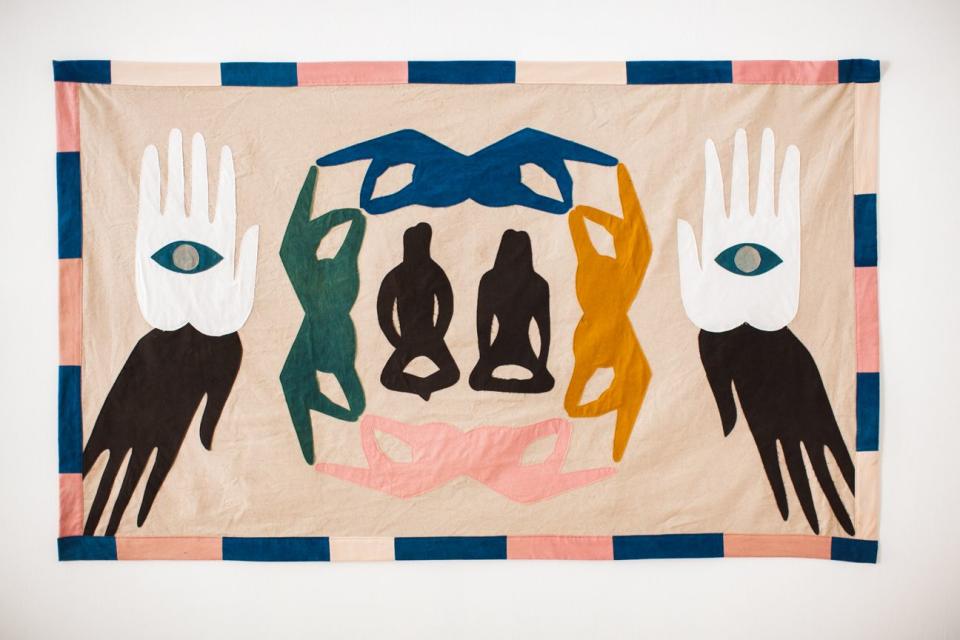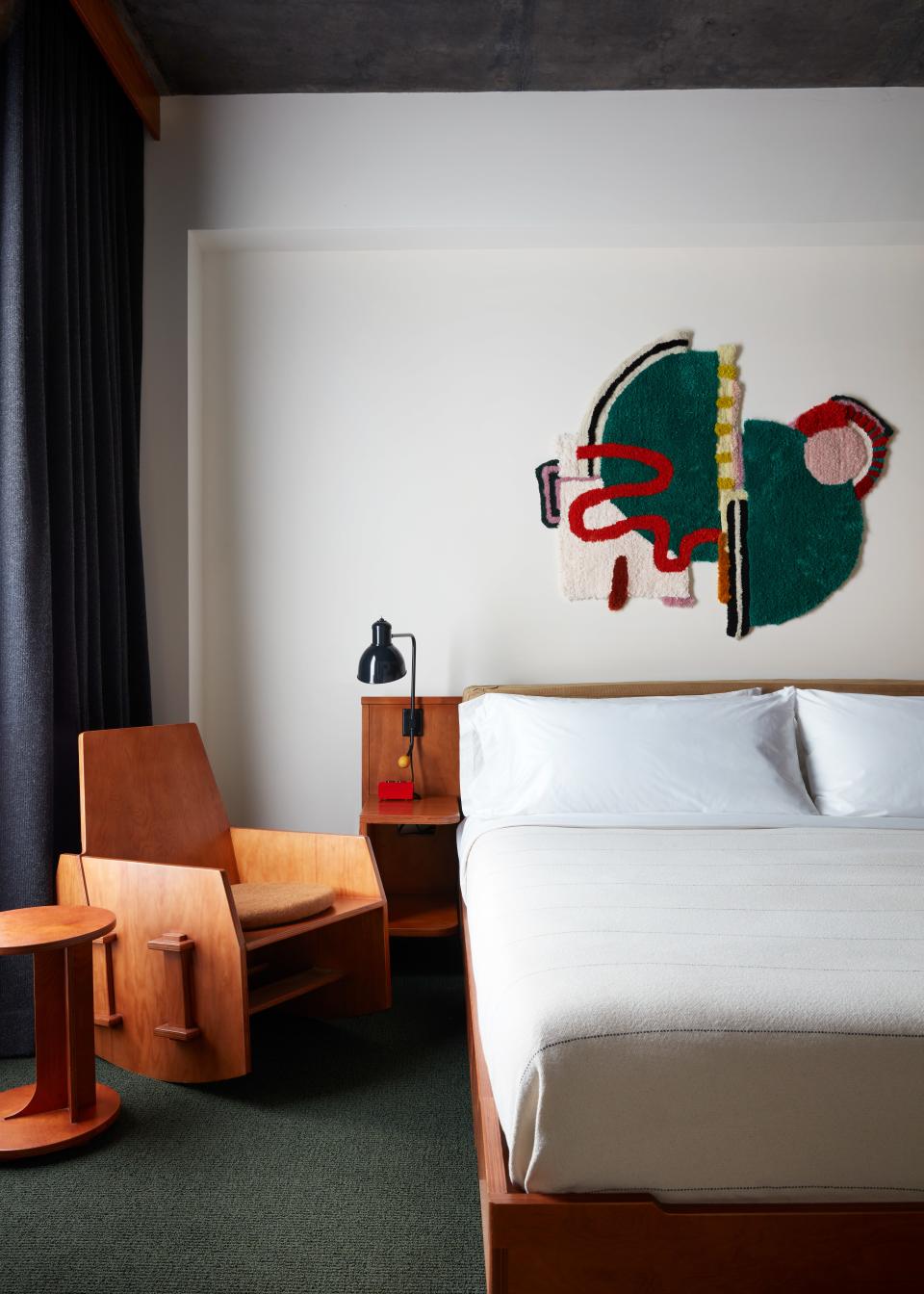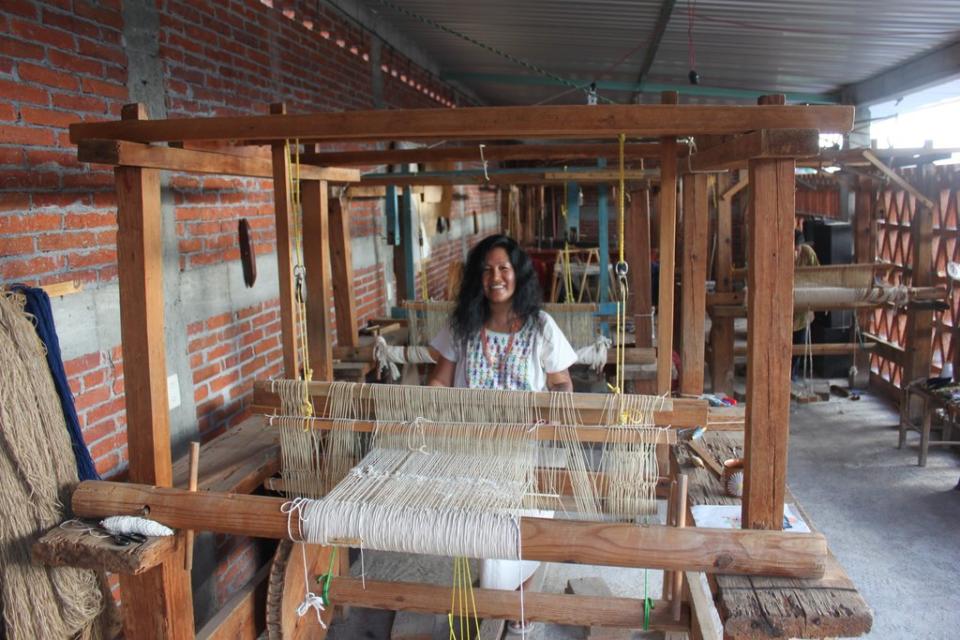These Independent Fiber Artists Find Connection and Healing
For many artists, the upending of life as we once knew it more than a year ago has led to a reevaluation of how to maintain a creative practice in spite, and often because of, so many unforeseen obstacles. They’ve proven resilient: making adjustments, reevaluating techniques, and embracing new approaches to working through obstacles related to materials, labor, or something bigger. Fiber artists in particular, whose work often focuses on techniques for overlap and connection, have demonstrated especially valuable lessons that anyone can learn from, regardless of artistic ability or inclination.

Niki Tsukamoto, a fiber artist based outside of Los Angeles, maintains a solo studio art practice aptly titled the Fiber Art Project, in addition to the one she shares with her partner, Yusuke. Most of the artwork she and her husband create together is based on the human condition, collective consciousness, universal experiences, and the beauty of cultural overlap—relatable themes for anyone during a global crisis. To create their flag-based forms, Yusuke first paints the images and illustrations that Niki then pieces together, quite literally, for their joint projects. In noting the experiences that others have with their work—how they react to it, or where they find symbolism or iconography where she and her husband didn’t, the duo aims to highlight the beauty of differing experiences within the same framework.
Niki’s personal artwork practice is based on natural dyes and fibers, lending itself to a monochromatic color palette, or one of soft, subtle patterns aimed to evoke an emotional response. Her particular approach to piecework is inspired by pojagi, an ancient Korean method of fiber art wherein bits of scrap material were patched and stitched together to create protective coverings for temple offerings. These “physical, visceral touchstones,” as Niki describes them, are especially meaningful now, when global conditions pose an even greater threat than usual.
Pieces from both Niki’s solo and joint practices will be included in the design of the newest Ace Hotel, scheduled to open in downtown Brooklyn this summer, for which Niki also curated the work of approximately two dozen fiber artists. She became well acquainted with the particular challenges the other artists were facing, acknowledging the double-edged sword of feeling grateful about having work to do, while being overwhelmed by the expectation to be inspired and creative amidst chaos. As Niki explains, though, it was incredible to “see how much beauty people were able to create in such dire situations”—not only in getting the work done in time to meet deadlines, but also by shifting their perspectives.

For Caroline Kaufman, one of the Brooklyn-based artists included in the program, the ability to continue working as she had been previously was completely halted last spring, forcing her to reevaluate goals based on what was physically possible—an exercise in creativity separate from art-making. Caroline’s practice includes the creation of large-scale, abstract tufted fiber works that she makes in her studio, but doesn’t have the space to create in her apartment. Fortunately, her talents aren’t limited to these pieces, so when New York was on complete lockdown in spring of last year, she pivoted to focus on her painting, making smaller pieces at home on her kitchen table. When some restrictions were lifted and she felt safe returning to her studio, she did so on her bike, riding back and forth all summer and fall between her Greenpoint studio and Park Slope apartment. Regularly making a 14-mile round trip, often with supplies in tow, coupled with her days spent on a ladder with her tufting gun, led her to realize how physical her work was in a way she hadn’t before. Though she felt really strong at the time, she’s since been considering a studio space closer to her apartment.

Cynthia Alberto, an artist, designer, and founder of the Weaving Hand, a Brooklyn-based studio and healing arts center, has also maintained a robust practice this past year, in spite of the circumstances outside of her control. Her practice has always been about reinventing and figuring out different ways of expression; Cynthia opened her studio after graduating from FIT without a plan, organically adding programs every year until it grew into where it is now, a community space that fuses different global traditions and cultures. At the beginning of the pandemic, Cynthia found herself weaving more than ever with her children “because it was the only thing we could do: be home, cook, eat, sleep, weave.”
Weaving to heal has taken on new meaning for her personally this past year. Cynthia, who is Filipina, embraced her practice as a means of working through the trauma of being repeatedly harassed on the street last spring. She started a weaving series on her floor loom called “We Are Not the Virus” to help with the anxiety and paranoia she’s felt; the project is still a work in progress.
A teacher who loves to share her knowledge, Cynthia is insistent on proving that ”a weaving practice doesn’t have to be a big production. As long as you have something to hold the threads, “you can make a loom out of anything.” This past winter, she worked with worked with Artshack, a nonprofit community ceramics studio in Bed-Stuy, to demonstrate this firsthand, combining ceramics and weaving in a studio residency that invites the local community to work one-on-one with her. There, she weaves together donated scrap materials on looms made of hand-formed clay.
Cynthia wholly believes in the power of art, community involvement, and togetherness as a healing exercise, to help with the “collective trauma and the healing that needs to happen.” She worked with the Hunterdon Museum in New Jersey last fall to weave together pieces of fabric that contained messages of hope and healing written by community members for a tapestry currently hanging there.
Maintaining an artistic practice can be challenging even under normal circumstances. While the events of the past year could never be described as desirable, so many artists have proven that their creativity knows no limits, exhibiting a flexibility, resilience, and adaptability in the process that can serve as lessons for anyone to apply to their daily lives.
Originally Appeared on Architectural Digest

